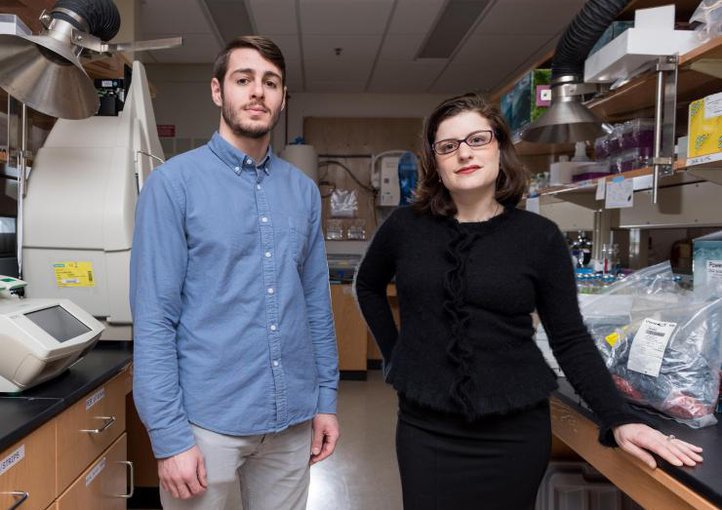
Sept. 27, 2017
Research Highlight
The Role of Microbes in Maintaining Atmospheric Methane on the Early Earth

Marcus Bray (left), a biology Ph.D. candidate, and Jennifer Glass, assistant professor in the Georgia Institute of Technology’s School of Earth and Atmospheric Sciences and member of the NASA Astrobiology Institute Alternative Earths team, are shown in the laboratory where tiny incubators simulated early Earth conditions.Image credit: Rob Felt, Georgia Tech.
By studying methane and iron cycling in sediments from Lake Matano in Indonesia, scientists are gaining new insights about methane in the atmosphere of the ancient Earth. The flux of methane in Earth’s early atmosphere would have played an important role in regulating the capacity of methane to warm our planet when the Sun was young and faint.
Over a period of 500 days, the team studied the microbial makeup of incubations from Lake Matano as an analogue to the ancient ocean of Earth. Lake Matano is a remote, natural body of water that is being used to help astrobiologists understand the Archean ocean due to the fact that it’s depths are anoxic and rich in iron. The findings indicate that a spatial separation between communities of iron-reducing and methanogenic microbes in ocean sediments could help explain how methane persisted as a greenhouse gas on the early Earth.
The study, “Shifting microbial communities sustain multiyear iron reduction and methanogenesis in ferruginous sediment incubations,” was published in the journal Geobiology. The work was supported by NASA Astrobiology through the Exobiology & Evolutionary Biology Program.
Additional Resources:
Behind the Iron Curtain: How Methane-Making Microbes Kept the Early Earth Warm